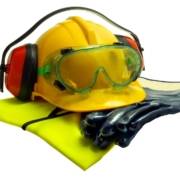
Where your money goes when you select the wrong class codes.
One of the fundamental components of workers’ comp insurance pricing is the process of classifying different workplace exposures into a system of codes. Each workers comp code has an individual rate dependent on the risk of that exposure. A worker’s comp classification code for clerical work has a much lower rate than the worker’s comp codes for construction work. The reason being, the average exposures of those two types of employment are much different.
-
New York Code 5000 – Chimney Construction – Rate $29.05
-
New York Code 8810 – Clerical Office Workers – Rate $0.27
Yet, when you move into less obvious examples, the question of proper classifications becomes much more complex. Unfortunately, the use of an improper code is very easy and happens more than it should. Improper code use can be an expensive mistake for a business. It may end up costing them tens of thousands of dollars per year(sometimes hundreds). Some businesses spend years slotted in more expensive class codes.
Employers can use more than a single classification code on a policy
Employees group into their classifications and their payroll will vary accordingly. Sometimes small details can make a big difference in which classification code you use. Which, in turn, can make a big difference in rates and premiums. As a business owner, it is important to understand the codes which classify your employees. Be sure the definition includes the work they perform. To do this, you can use the links we provided at the bottom of this page. If your business operations change, you must re-visit your classifications.
When you make a mistake, it’s usually at the beginning of the policy year and not noticed until you receive the results of your worker’s comp audit. You’ll realize the increased premium even though your payroll stayed the same. The auditor, the broker, or the business owner may make the mistake.
When an Auditor Makes a Mistake
Sometimes an auditor will place employees in the wrong class code. This is unfortunately simple to do because there are several hundred class codes. Auditors often claim this is the fault of the business owner. They will often say the business owner did not provide enough information for proper classification. To make sure this doesn’t happen, someone from the company should stay with the auditor at all times. This ensures the auditor has enough information for the placement of employees into the proper class code. Handing over financial information to an auditor will almost always create a problem. After all, the worker’s compensation audit is designed for speed, performed by an outside firm that pays the auditor $150 or so per audit. That person wants to hurry to get in and out because time is money. Further insurance carriers by law have only a small window in which to perform this audit as mandated by state law. Finally, if they misclassify an employee it’s almost always in the carrier’s favor because the DEFAULT is to the highest-rated code.
When a Broker or Business Owner Makes a Mistake
By far the most common mistake a business owner or broker makes is putting too much payroll into clerical or outside sales codes. A general rule: if the employee who is classified into clerical has any interaction with customers, takes money from customers, or performs any job of the governing classification, they will move into the governing class at audit. This will cause the employer to suffer an unexpected cost for his/her worker’s compensation premium. These codes are abused and when it’s audit time it’s the auditors’ job to catch the abuse. Sometimes businesses forget to split their payroll into their general operations and clerical. This actually causes them to pay way more than they should.
Construction is Especially Important
For construction work, each distinct type of construction or erection operation at a job or location shall be assigned to the classification which specifically describes such operation provided separate payroll records are maintained for each operation. Any such operation for which separate payroll records ARE NOT MAINTAINED must be assigned to the carrier’s highest-rated classification. Applying to the job or location where the operation is performed.
The Bottom Line of Workers Comp Class Codes
The bottom line is to recognize that errors do occur, and they can be costly. But, by knowing what to look for, and not accepting every classification as correct, you can save significant amounts of money.
If you haven’t been doing this, worker’s compensation premium recovery (Comp Check) is something you should consider. It checks for class code errors, experience mod errors, and more. Comp Check runs on a contingency basis. Thus you don’t get charged unless we (1) find errors and (2) are successful in recovering money on your behalf. We can look back on three policy years. It’s a great tool to correct past errors, but it is limited to that. As Risk Managers, we of-course suggest you partner with someone (like us) that will help prevent the errors in the first place. If you rely on premium recovery, you are resigning yourself to splitting money that should be yours.
Workers Comp Class Code Lookups
You can look up your specific codes and see the history of rates for those codes:
- New York Class Codes: http://www.nycirb.org/
- New Jersey Class Codes: https://www.njcrib.com/
- California Class Codes: http://www.wcirb.com/content/classification-information
- Massachusetts Class Codes: https://www.wcribma.org/mass/ToolsAndServices/MACI/Main.aspx
- Pennsylvania Class Codes: http://www.portal.state.pa.us/portal/server.pt/community/underwriting/10437/current_swif_rates/552685









